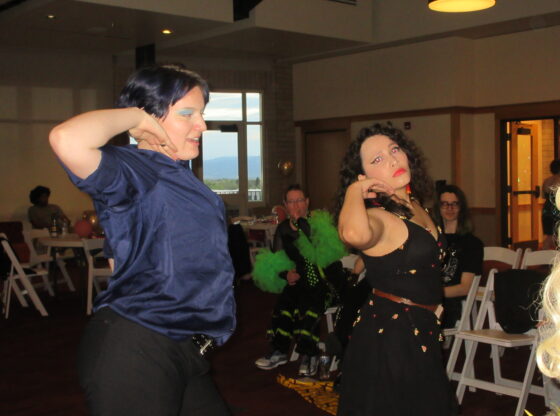It’s a good thing Jack London is dead, because he would be appalled by what Chris Sanders did to his story. “Call of the Wild” by Jack London is a dramatic and gritty story of a dog who goes through many trials and tribulations to eventually become “wild.” “Call of the Wild,” directed by Sanders and starring Harrison Ford, is a family movie that stole the narrative of London’s story.
The first thing you notice about the film is the dog. While it’s obviously a film about a dog, this isn’t a real animal. The computer-generated (CG) dog works practically but fails to be convincing. “Buck,” the main character, was overly large and zany. His movements are exaggerated and animated. When he moved, the ground shook and furniture rumbled. He runs stealing food and causing mayhem. It felt like the film was trying to shove the idea that this dog is quirky down your throat. Now, for all those that read the book in high school, this is the same dog that will be beaten and starved later in the story.
The film’s attempt to bring comedy into London’s story is haphazard. The juxtaposition of comedy and epic does not sit well. It is hard to laugh at quips and physical comedy when a dog was beaten in the scene before. It also makes it hard to take the dark material seriously when the film is so comedic.
The dramatic scenes are overshadowed by the constant explanation in the first half of the film. The viewer never has the opportunity to digest the information for themselves, since the film decides to immediately explain everything. This exposition is also often done lazily, using human-animal conversation or film narration.
In the film, almost every character talks to Buck like he is a human. To make it worse, Buck understands everything. In fact, every dog in this film can understand English perfectly. The movie embraces this idea so deeply that it even makes fun of it in the movie. Buck’s second owner, Francois (Cara Gee), who is a female in the movie and a male in the book, made a joke about this in the film by mentioning to Perrault (Omar Sy) that the dogs cannot understand him. Well, in this film, they do.
In “Call of the Wild,” the idea of objective narration is ignored to allow for easy jokes. This is shown when Perrault makes a joke about Buck being tired because he has “California feet.” The problem with this joke is that Perrault has no way of knowing where Buck came from. Buck transferred through at least three owners before being acquired by Perrault, and I am sure they weren’t all briefed on Buck’s pedigree and origin.
The film, however, is not completely full of holes and mistakes. Buck’s rise through the ranks in the pack is told well. The sub-arc is subtle and told solely through the activities and reactions of the dogs to Buck’s actions. The conclusive fight with the alpha dog, Spitz, is a satisfying end to the arc.
The interactions between John Thorton, Ford’s character, and Buck were very satisfying. Similar to the book, Thorton and Buck embodied the ideal man and dog relationship. Frankly, the biggest pitfall of the film is that it wasn’t an hour and 40 minutes of Ford and a CG dog.
The film has its moments, but the good does not outweigh the bad. The film strayed too far from its source material and it lost the magic that London’s book had.











